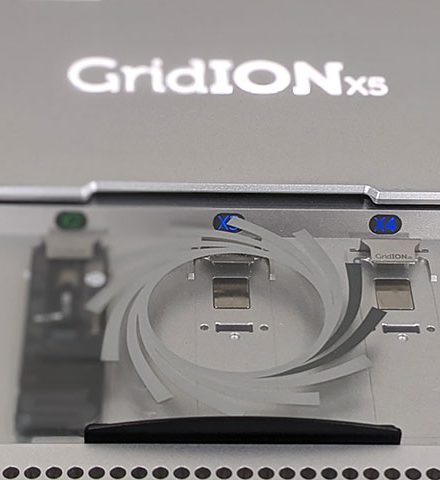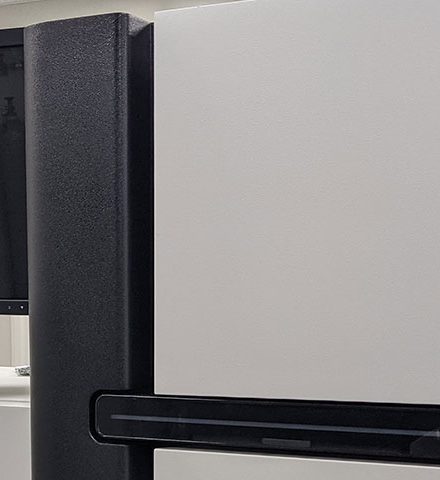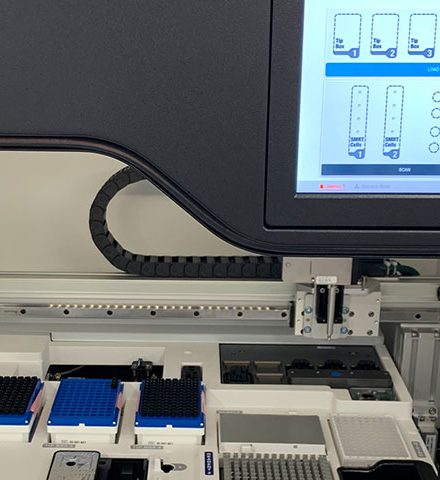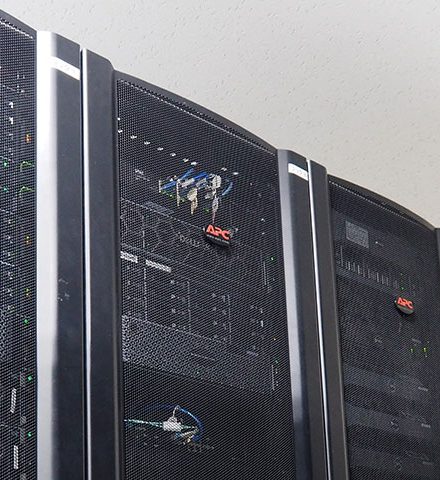遺伝学教室について
Introduction
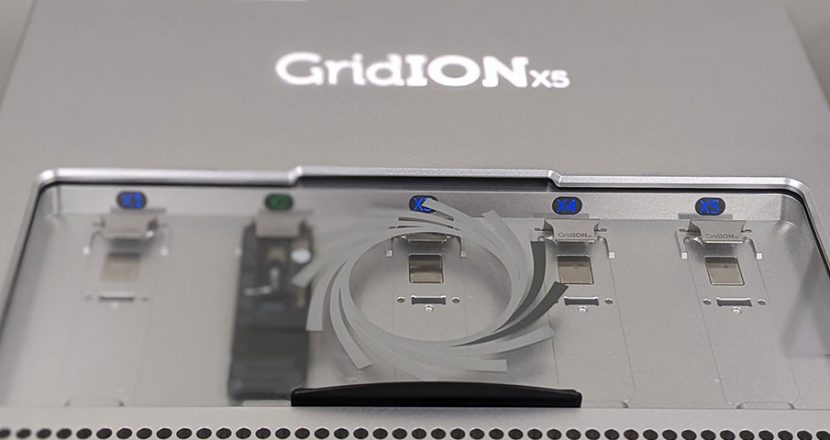
国内外で突出する成果
横浜市立大学大学院医学研究科遺伝学は、2003年10月1日より松本直通が開設いたしました。教室の研究の柱を、ヒト遺伝性疾患の遺伝学的原因解明とし、様々な遺伝病の解明に取り組んできました。常に時代の最先端ゲノム解析技術を駆使して、下表にある多くの疾患の原因遺伝子を明らかにしました。
| Year | Disease | Mutated Gene | Journal | Principal Investigator |
|---|---|---|---|---|
| 2002 | Sotos syndrome | NSD1 | Nat Genet | |
| 2004 | Marfan syndrome II | TGRBR2 | Nat Genet | |
| 2008 | Ohtahara syndrome | STXBP1 | Nat Genet | |
| 2010 | West syndrome | SPTAN1 | AJHG | |
| 2010 | New Ehlers-Danlos syndrome | CHST14 | Hum Mut | |
| 2011 | Microphthalmia syndrome | SMOC1 | AJHG | |
| 2012 | Porencephaly | COL4A2 | AJHG | |
| 2013 | Schizencephaly | COL4A1 | Ann Neurol | |
| 2011 | AR spinocerebellar ataxia | SYT14 | AJHG | |
| 2011 | HCAHC | POLR3A & POLR3B | AJHG | |
| 2012 | Neonatal metabol decomp | UQCRC2 | Hum Mut | |
| 2012 | Coffin-Siris syndrome | 5 SWI/SNF genes | Nat Genet | |
| 2012 | Ohtahara syndrome | KCNQ2 (allelic) | Ann Neurol | |
| 2012 | Ohtahara syndrome | CASK (allelic) | Epilepsia | |
| 2013 | SENDA | WDR45 | Nat Genet | |
| 2013 | Nemaline myopathy | KLHL40 | AJHG | |
| 2013 | SEMD-JL1 | B3GALT6 | AJHG | |
| 2013 | Ohtahara syndrome | GNAO1 | AJHG | |
| 2014 | Leigh syndrome | GYG2 | Hum Genet | |
| 2014 | Coffin-Siris syndrome | SOX11 | Nat Commun | |
| 2015 | Glycosylation disorder | COG2 | Clin Genet | |
| 2015 | FCD Type IIb | MTOR (somatic) | Ann Neurol | |
| 2015 | Steroid-registant nephrotic syndrome | NUP107 | AJHG | |
| 2015 | Spinal extradural arachnoid cyst | HOXD4 | Plos One | |
| 2016 | Axial spondylometaphyseal dysplaia | C21orf2 | Plos One | |
| 2016 | Hypothalamic Hamartoma | OFD1 & GLI3 (somatic) | Ann Clin Transl Neurol | |
| 2016 | Congenital glycosylation disorder | PIGG | AJHG | |
| 2016 | MIRAGE syndrome | SAMD9 | Nat Genet | |
| 2016 | Progressive neurodegeneration | TBCD | AJHG | |
| 2016 | EOEE with optic atrophy | AP3P2 | AJHG | |
| 2017 | Nemaline myopathy | MYPN | AJHG | |
| 2017 | Pontocerebellar Hypoplasia 7 | TOE1 | Nat Genet | |
| 2017 | Weaver syndrome | SUZ12 | Hum Mut | |
| 2017 | EOEE | CAMK2A/B | Ann Clin Transl Neurol | |
| 2018 | EOEE | SETD1B | Hum Genet | |
| 2018 | EOEE | CNPY3 | AJHG | |
| 2018 | Infantile-onset pulmonary alveolar proteinosis with hypogammaglobulinemia | OAS1 | AJHG | |
| 2018 | EOEE o r MCA / ID | PPP3CA | Hum Mol Genet | |
| 2018 | Neurodegeneration with cerebellar hypoplasia | PMPCB | AJHG | |
| 2018 | EOEE | CYFIP2 | Ann Neurol | |
| 2018 | EOEE | ATP6V1A | Brain | |
| 2018 | Polymicrogyria | SCN3A | Ann Neurol | |
| 2018 | Neurodevelopmental disorder | FBXO11 | AJHG | |
| 2018 | West syndrome | PHACTR1 | Brain | |
| 2018 | Brain small vessel disorder | COLGALT1 | Ann Neurol | |
| 2018 | Galloway-Mowat syndrome | NUP133 | Ann Neurol | |
| 2019 | Neuronal intranuclear inclusion disease | NOTCH2NLC | Nat Genet | |
| 2019 | Neurodevelopmental deficits and epilepsy | ACTL6B | AJHG | |
| 2019 | 46,XX and 46,XY disorders of sex development | MYRF | Hum Mol Genet | |
| 2019 | Skeletal dysplasia of dysosteosclerosis-Pyle disease spectrum and degenerative encephalopathy with brain malformation | CSF1R | AJHG | |
| 2019 | Spastic diplegia, ID, cerebral atrophy and corpus callosum hypoplasia | MAPK8IP3 | Ann Neurol | |
| 2019 | Syndromic neurodevelopmental disorder | SMARCD1 | AJHG | |
| 2019 | Neurodevelopmental disorder | POU3F3 | AJHG | |
| 2019 | Liberfarb syndrome | PISD | Genet Med | |
| 2019 | Congenital glycosylation disorder | PIGB | AJHG | |
| 2019 | Hypothalamic Hamartoma | KIAA0556, PTPN11 & DYNC2H1 (somatic) | Neurology | |
| 2019 | Noonan syndrome | RRAS2 | AJHG | |
| 2019 | Developmental syndrome with Marfanoid habitus | NKAP | AJHG | |
| 2020 | Craniofacial brain abnormality | MN1 | AJHG | |
| 2020 | Neuro-ectodermal phenotype | RHOA (somatic) | Hum Mut | |
| 2020 | EOEE | SEMA6B | AJHG | |
| 2020 | Intelectual disablity with autism, brain malformations, and epilepsy in females | DDX3X | Neuron | |
| 2020 | AMeD syndrome | ALDH2 and ALDH5 (digenic) | Sci Adv | |
| 2021 | Developmental and epileptic encephalopathy | CELF2 | Hum Mut | |
| 2021 | Polymicrogyria | ATP1A3 | Sci Adv | |
| 2021 | Neurodevelopmental disorders | SATB1 | AJHG | |
| 2021 | LINKED syndrome | OTUD5 | Sci Adv | |
| 2021 | Neurodevelopmental delay, intellectual disability and epilepsy | NCDN | AJHG | |
| 2021 | Relapsing polychondritis | UBA1 (somatic) | Ann Rheum Dis | |
| 2021 | Developmental and epileptic encephalopathy | ATP6V0A1 | Nat Commun | |
| 2021 | Sclerosing bone disorder | TMEM53 | Nat Commun | |
| 2021 | Neurodevelopmental disorder | SHANK1 | Genet Med | |
| 2021 | Sturge-Weber syndrome | GNB2 (somatic) | Hum Mol Genet | |
| 2021 | Syndromic intellectual disability | GNB2 | J Med Genet | |
| 2021 | Epilepsy | MAST3 | Ann Neurol | |
| 2021 | Developmental delay, epilepsy and brain abnormality | ARF3 | Hum Mol Genet | |
| 2021 | A new type of osteopetrosis | SLC4A2 | J Bone Miner Res | |
| 2022 | Kyphomelic dysplasia | KIF5B | Clin Genet | |
| 2022 | CANVAS | RFC1 Comp Het Repeats (AAGGG)/(ACAGG) | Brain |
遺伝子単離の手法
Sotos症候群(Nat Genet 2002)、Marfan症候群2型(Nat Genet 2004)は、孤発例に合併する染色体構造異常の切断点上に位置する断裂した遺伝子から原因を特定しました。大田原症候群(Nat Genet 2008)は孤発例のゲノムマイクロアレー解析で特定した微細欠失内の遺伝子群から特定しました。Coffin-Siris症候群(Nat Genet 2012, Nat Commun 2014)・SENDA (Nat Genet 2013)は次世代シーケンスを使った全エクソーム解析を用いて特定しました。神経核内封入体病(Nat Genet 2019)はロングリードシーケンスを用いて特定したリピート病の一つで、ロングリードシーケンスの全ゲノム解析で、原因を特定した初めてのリピート病です。
当教室は、様々な希少難病の原因解明に関する国家プロジェクトに関わってきました。2010-2013年度網羅的遺伝子解析拠点(厚生労働省難治性疾患克服事業)・2014-2016年度網羅的遺伝子解析拠点(厚生労働省難治性疾患克服事業>AMED委託費に移行)・2017-2019年オミックス解析拠点(AMED委託費)・2020-2022年全ゲノム解析拠点の拠点班、2015-2017年度・2018-2019年度未診断疾患イニシアチブ(IRUD)の解析センターで、上記のヒト遺伝性疾患の原因解明を行ってきました。
研究の特徴は、最先端ゲノム解析テクノロジーをヒト疾患ゲノム解析に応用していくもので、運用法や方法論が確立していない段階の新規技術を積極的に導入し、解析法を確立と疾患の原因解明を両立して研究を進めて行きます。時に大変な困難が伴いますが、世界の誰よりも早く見たことのない景色を見る(原因を解明する)ために努力しています。
Introduction
The Department of Genetics, Yokohama City University Graduate School of Medicine was established on October 1, 2003 by Dr. Naomichi Matsumoto. The main focus of our research is the elucidation of the genetic causes of various human genetic diseases. Using the most advanced genome analysis technologies of the past, we have identified the causative genes of the various diseases listed in the table below.
| Year | Disease | Mutated Gene | Journal | Principal Investigator |
|---|---|---|---|---|
| 2002 | Sotos syndrome | NSD1 | Nat Genet | |
| 2004 | Marfan syndrome II | TGRBR2 | Nat Genet | |
| 2008 | Ohtahara syndrome | STXBP1 | Nat Genet | |
| 2010 | West syndrome | SPTAN1 | AJHG | |
| 2010 | New Ehlers-Danlos syndrome | CHST14 | Hum Mut | |
| 2011 | Microphthalmia syndrome | SMOC1 | AJHG | |
| 2012 | Porencephaly | COL4A2 | AJHG | |
| 2013 | Schizencephaly | COL4A1 | Ann Neurol | |
| 2011 | AR spinocerebellar ataxia | SYT14 | AJHG | |
| 2011 | HCAHC | POLR3A & POLR3B | AJHG | |
| 2012 | Neonatal metabol decomp | UQCRC2 | Hum Mut | |
| 2012 | Coffin-Siris syndrome | 5 SWI/SNF genes | Nat Genet | |
| 2012 | Ohtahara syndrome | KCNQ2 (allelic) | Ann Neurol | |
| 2012 | Ohtahara syndrome | CASK (allelic) | Epilepsia | |
| 2013 | SENDA | WDR45 | Nat Genet | |
| 2013 | Nemaline myopathy | KLHL40 | AJHG | |
| 2013 | SEMD-JL1 | B3GALT6 | AJHG | |
| 2013 | Ohtahara syndrome | GNAO1 | AJHG | |
| 2014 | Leigh syndrome | GYG2 | Hum Genet | |
| 2014 | Coffin-Siris syndrome | SOX11 | Nat Commun | |
| 2015 | Glycosylation disorder | COG2 | Clin Genet | |
| 2015 | FCD Type IIb | MTOR (somatic) | Ann Neurol | |
| 2015 | Steroid-registant nephrotic syndrome | NUP107 | AJHG | |
| 2015 | Spinal extradural arachnoid cyst | HOXD4 | Plos One | |
| 2016 | Axial spondylometaphyseal dysplaia | C21orf2 | Plos One | |
| 2016 | Hypothalamic Hamartoma | OFD1 & GLI3 (somatic) | Ann Clin Transl Neurol | |
| 2016 | Congenital glycosylation disorder | PIGG | AJHG | |
| 2016 | MIRAGE syndrome | SAMD9 | Nat Genet | |
| 2016 | Progressive neurodegeneration | TBCD | AJHG | |
| 2016 | EOEE with optic atrophy | AP3P2 | AJHG | |
| 2017 | Nemaline mypoathy | MYPN | AJHG | |
| 2017 | Pontocerebellar Hypoplasia 7 | TOE1 | Nat Genet | |
| 2017 | Weaver syndrome | SUZ12 | Hum Mut | |
| 2017 | EOEE | CAMK2A/B | Ann Clin Transl Neurol | |
| 2018 | EOEE | SETD1B | Hum Genet | |
| 2018 | EOEE | CNPY3 | AJHG | |
| 2018 | Infantile-onset pulmonary alveolar proteinosis with hypogammaglobulinemia | OAS1 | AJHG | |
| 2018 | EOEE o r MCA / ID | PPP3CA | Hum Mol Genet | |
| 2018 | Neurodegeneration with cerebellar hypoplasia | PMPCB | AJHG | |
| 2018 | EOEE | CYFIP2 | Ann Neurol | |
| 2018 | EOEE | ATP6V1A | Brain | |
| 2018 | Polymicrogyria | SCN3A | Ann Neurol | |
| 2018 | Neurodevelopmental disorders | FBXO11 | AJHG | |
| 2018 | West syndrome | PHACTR1 | Brain | |
| 2018 | Brain small vessel disorder | COLGALT1 | Ann Neurol | |
| 2018 | Galloway-Mowat syndrome | NUP133 | Ann Neurol | |
| 2019 | Neuronal intranuclear inclusion disease | NOTCH2NLC | Nat Genet | |
| 2019 | Neurodevelopmental deficits and epilepsy | ACTL6B | AJHG | |
| 2019 | 46,XX and 46,XY disorders of sex development | MYRF | Hum Mol Genet | |
| 2019 | Skeletal dysplasia of dysosteosclerosis-Pyle disease spectrum and degenerative encephalopathy with brain malformation | CSF1R | AJHG | |
| 2019 | Spastic diplegia, ID, cerebral atrophy and corpus callosum hypoplasia | MAPK8IP3 | Ann Neurol | |
| 2019 | Syndromic neurodevelopmental disorder | SMARCD1 | AJHG | |
| 2019 | Neurodevelopmental disorder | POU3F3 | AJHG | |
| 2019 | Liberfarb syndrome | PISD | Genet Med | |
| 2019 | Congenital glycosylation disorder | PIGB | AJHG | |
| 2019 | Hypothalamic Hamartoma | KIAA0556, PTPN11 & DYNC2H1 (somatic) | Neurology | |
| 2019 | Noonan syndrome | RRAS2 | AJHG | |
| 2019 | Developmental syndrome with Marfanoid habitus | NKAP | AJHG | |
| 2020 | Craniofacial brain abnormality | MN1 | AJHG | |
| 2020 | Neuro-ectodermal phenotype | RHOA (somatic) | Hum Mut | |
| 2020 | EOEE | SEMA6B | AJHG | |
| 2020 | Intelectual disablity with autism, brain malformations, and epilepsy in females | DDX3X | Neuron | |
| 2020 | AMeD syndrome | ALDH2 and ALDH5 (digenic) | Sci Adv | |
| 2021 | Developmental and epileptic encephalopathy | CELF2 | Hum Mut | |
| 2021 | Polymicrogyria | ATP1A3 | Sci Adv | |
| 2021 | Neurodevelopmental disorders | SATB1 | AJHG | |
| 2021 | LINKED syndrome | OTUD5 | Sci Adv | |
| 2021 | Neurodevelopmental delay, intellectual disability and epilepsy | NCDN | AJHG | |
| 2021 | Relapsing polychondritis | UBA1 (somatic) | Ann Rheum Dis | |
| 2021 | Developmental and epileptic encephalopathy | ATP6V0A1 | Nat Commun | |
| 2021 | Sclerosing bone disorder | TMEM53 | Nat Commun | |
| 2021 | Neurodevelopmental disorder | SHANK1 | Genet Med | |
| 2021 | Sturge-Weber syndrome | GNB2 (somatic) | Hum Mol Genet | |
| 2021 | Syndromic intellectual disability | GNB2 | J Med Genet | |
| 2021 | Epilepsy | MAST3 | Ann Neurol | |
| 2021 | Developmental delay, epilepsy and brain abnormality | ARF3 | Hum Mol Genet | |
| 2021 | A new type of osteopetrosis | SLC4A2 | J Bone Miner Res | |
| 2022 | Kyphomelic dysplasia | KIF5B | Clin Genet | |
| 2022 | CANVAS | RFC1 Comp Het Repeats (AAGGG)/(ACAGG) | Brain |
We have identified the cause of Sotos syndrome (Nat Genet 2002) and Marfan syndrome type 2 (Nat Genet 2004) from broken genes located on the breakpoints of chromosomal structural abnormalities. Coffin-Siris syndrome (Nat Genet 2012, Nat Commun 2014) and SENDA (Nat Genet 2013) were identified from a group of genes within a microdeletion identified by genomic microarray analysis of solitary cases. Coffin-Siris syndrome (Nat Genet 2012, Nat Commun 2014) and SENDA (Nat Genet 2013) were identified using whole exome analysis with next-generation sequencing. Neuronal nuclear inclusion body disease (Nat Genet 2019) is one of the repeat diseases identified using long read sequencing, and is the first repeat disease for which the cause was identified using whole genome analysis of long read sequences.
Our department has been involved in national projects for elucidating the causes of various rare and intractable diseases: 2010-2013 Comprehensive Genetic Analysis Center (Ministry of Health, Labour and Welfare, Project for Overcoming Intractable Diseases), 2014-2016 Comprehensive Genetic Analysis Center (Ministry of Health, Labour and Welfare, Project for Overcoming Intractable Diseases > transferred to AMED contract funding), 2017 -2019 Omics Analysis Center (funded by AMED), 2020-2022 Whole Genome Analysis Center, and 2015-2017 and 2018-2019 Undiagnosed Disease Initiative (IRUD) analysis centers, we have been elucidating the causes of the above human genetic diseases.
Our research is characterized by the application of the state-of-art genome analysis technologies to the analysis of human disease genomes, actively introducing new technologies that have not yet been established in terms of operational methods and methodologies, and conducting research to both establish analysis methods and elucidate the causes of diseases. Although it is sometimes very difficult, we are striving to see the never-before-seen scenery (cause) before anyone else in the world.

